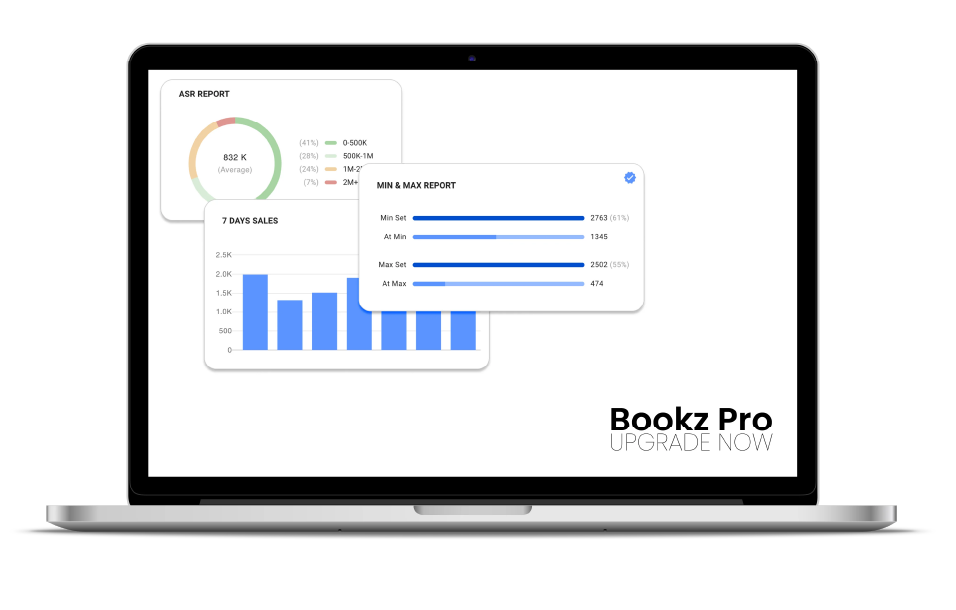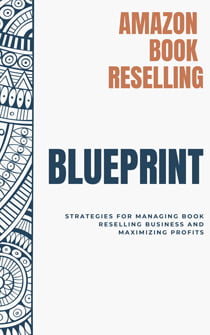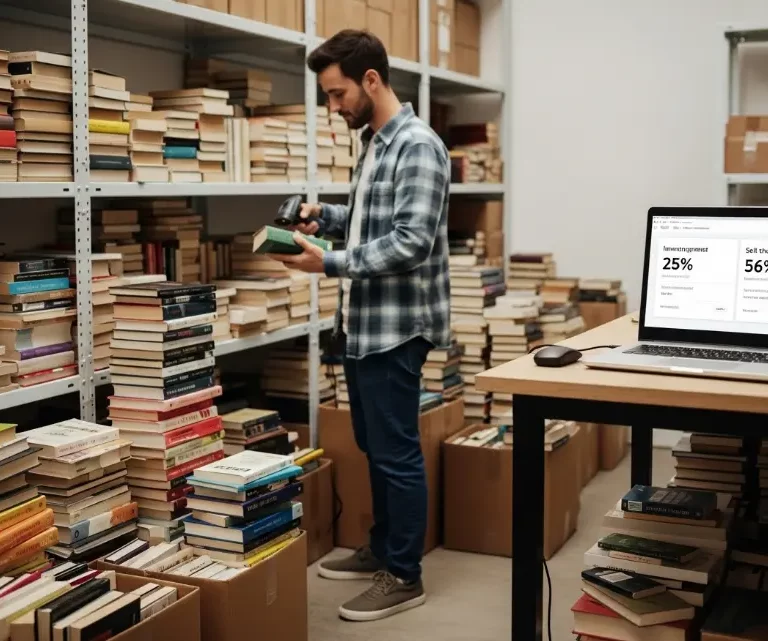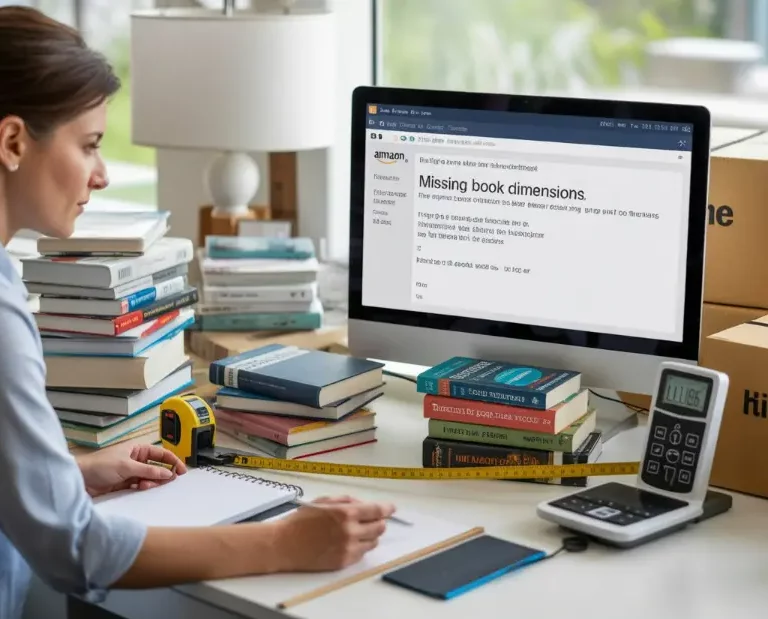A Beginner’s Guide on How to Determine the Value of a Book and Find Valuable Antiquarian Editions

If you enjoy old books or are curious about selling them, you may have come across the term antiquarian books. These are books that are old, rare, collectible, or unique. They often do not have barcodes or ISBNs, which makes them different from most modern books. That is why it’s important to understand how to determine the value of a book before deciding what to do with it.
In this guide, you’ll learn the key things to look for when figuring out how to determine the value of a book. You’ll discover what details matter most in antiquarian editions, how to use online tools effectively, and how to avoid wasting time on titles that aren’t worth much. By the end, you’ll know how to recognize hidden treasures and even turn this knowledge into a profitable business.
Why You Should Learn How to Determine the Value of a Book Before Selling
Antiquarian books often carry more value than popular fiction titles. While a modern paperback might only bring in a few dollars, certain older or collectible editions can sell for much more.
When it comes to selling books online, the average sold price (ASP) of antiquarian books is usually higher compared to regular books. That means even spending 20–30 minutes researching and listing a single title can be worthwhile. This is why many sellers take extra care to understand how to determine the value of a book instead of relying only on quick barcode scans.
First Steps to Determine the Value of a Book as a Beginner
When you come across an old book, take a moment to look closely. A few simple checks can give you clues about whether it’s worth researching further. Pay attention to these details:
- Subject: Books that cover specialized topics, unique histories, or niche interests may attract more attention from collectors.
- Author: Well-known authors sometimes have first editions or signed copies that are more valuable to buyers.
- Year: Older books, like those printed before 1970, can be worth a closer look.
- Copyright page: Found behind the title page, it usually lists the publisher, year, edition, and sometimes the ISBN, all of which help you figure out how to determine the value of a book.
These first steps don’t take long, but they help you separate ordinary books from those that may have real value.
All in One Software
for Book Sellers
Scout Better – List Faster – Reprice Smarter
Over 30% Business Growth
Achieved by Our Clients

Using Online Tools to Determine the Value of a Book
One of the biggest advantages for sellers today is the variety of online tools available. These resources make it much easier to understand how to determine the value of a book, even if you’re just starting out. Here are some of the most helpful ones:
- eBay sold listings: Search the title and year, then filter by “Sold Listings.” This shows what buyers actually paid, not just asking prices.
- Amazon Seller App: Use the camera to scan the cover. Even without an ISBN, it may pull up related listings with sales rank and payout estimates.
- viaLibri.net: A great platform that scans multiple marketplaces like AbeBooks and Biblio to show global pricing data.
- OCR apps (like Bookzy Mobile): These can scan ISBNs if they exist, even on older books.
By cross-checking results across several sites, you’ll get a clearer picture of both market price and demand.
How to Determine the Value of a Book Without an ISBN
Many antiquarian books were printed before ISBNs became standard, which means you often can’t rely on barcode scans to identify them. Certain features can serve as helpful clues when deciding whether a book might be worth further research:
- First editions or limited editions: These are often sought after and can sometimes be more valuable.
- Anniversary or special editions: Collectors may pay extra attention to these editions, depending on the title.
- Signatures: An author’s autograph can increase interest, particularly if the writer is well-known.
- Dust jackets: Older jackets, especially in good condition, can sometimes add to the book’s appeal.
- Printed price: If you notice an older price like “$1.95” or “25¢” on the jacket, it’s usually a sign that the edition is from an earlier era.
With practice, you’ll quickly get better at recognizing these clues and understanding how to determine the value of a book based on condition, age, and rarity.
Setting a Minimum Value and Avoiding Low-Return Books
Not every book will be worth selling. To save time, many sellers decide on a minimum value, for example, $30. If a book consistently sells for less than that, the effort of listing and shipping may not be worth it.
Still, there are exceptions. A book priced at $200 or more might be worth listing even if it doesn’t sell often. The goal is to focus on books that give you the best return for your time.
Learning from Communities and Consignment Opportunities
You don’t have to figure everything out alone. Many online groups and forums (like the Vintage, Rare, & Antique Books in Facebook) bring together book sellers who share tips, answer questions, and discuss strategies for how to determine the value of a book more accurately. Joining these spaces helps you learn faster and avoid beginner mistakes.
If you ever have more books than you can handle, consider consignment. This means giving your books to an experienced seller who lists them for you. They handle the sales, and you split the profits. It’s a practical way to keep your operation moving when you’re short on time or space.
Tracking and Organizing Your Research
Once you start selling, it’s important to track your results so you can see what’s working. A reliable all-in-one tool like Bookz Pro can simplify this process. It combines a powerful database scouting app, fast listing software, smart repricer, complete inventory management, and reimbursement collection—all in one platform.
With a single app and one point of contact, sellers can manage everything from sourcing to sales tracking efficiently, making it easier to stay organized and scale their Amazon book business.

Amazon Book Reselling Blueprint
Read now, explore our full guide. Your revolution starts here. Subscribe to get the blueprint!
Staying Organized and Confident as You Grow
Alongside good software, having a structured guide can make a huge difference. The Amazon Book Reselling Blueprint is a 35-page resource designed to give beginners a clear roadmap. It explains sourcing, researching, and pricing methods in an easy-to-follow format. Best of all, it’s available as a free download on the website, so you can start using its strategies right away.
By combining practical tools like Bookz Pro with educational resources such as the Amazon Book Reselling Blueprint, you’ll be in a stronger position to organize your workflow and confidently determine the value of every book you handle.
Conclusion
Determining the value of antiquarian books takes more time than scanning barcodes, but the rewards can be much greater. By learning to spot the right details, such as edition notes, dust jackets, and signatures, you’ll uncover valuable titles that others might overlook.
With the support of tools like Bookz Pro and resources like the Amazon Book Reselling Blueprint, learning how to determine the value of a book becomes less overwhelming and far more rewarding.
As a beginner, take things one step at a time. Each book you research will sharpen your eye and build your confidence. Soon, you’ll be able to filter quickly, identify treasures, and enjoy the satisfaction of turning old books into meaningful value.
What’s the most interesting antiquarian book you’ve come across in your own research?
Frequently Asked Questions
It means checking details like edition, author, year, and market demand to understand what a book might be worth.
Antiquarian books are old, rare, or collectible titles—often printed before ISBNs or barcodes existed.
Because some older editions can be worth far more than modern ones, and proper research helps you price them accurately.
Modern books use ISBNs, while older books require checking edition statements, jackets, and signatures to assess value.
It’s usually behind the title page and lists the publisher, year, and edition information.
Helpful tools include eBay sold listings, Amazon Seller App, viaLibri.net, AbeBooks, and OCR apps like Bookzy Mobile.
Look for clues like first editions, author signatures, dust jackets, and printed prices to gauge rarity and demand.
First editions, signed copies, special bindings, original jackets, and niche subject matter often increase value.
Check edition statements, publication year, and whether collectors seek that particular title.
Yes, original jackets, especially in good condition, can sometimes double a book’s price.
It’s the minimum resale value (like $30) you set to filter out low-profit titles.
viaLibri scans multiple marketplaces, while AbeBooks focuses on listings from its own network.
Yes, apps like Amazon Seller App, eBay, and Bookzy Mobile make mobile research possible.
Yes, rare first editions can retain value despite wear, depending on rarity and demand.
It may be rare—check with collector forums or professional appraisers.
They share tips, edition details, and experiences that make the research process faster and more accurate.
It’s when you give books to a professional seller to list for you, then split the profits.
When you have valuable books but lack the time, experience, or space to sell them yourself.
Use Amazon reports and tools like Bookz Pro to manage listings, track performance, and see which books sell best.
Keep a record of titles, sources, and prices, and use software to simplify your workflow.



